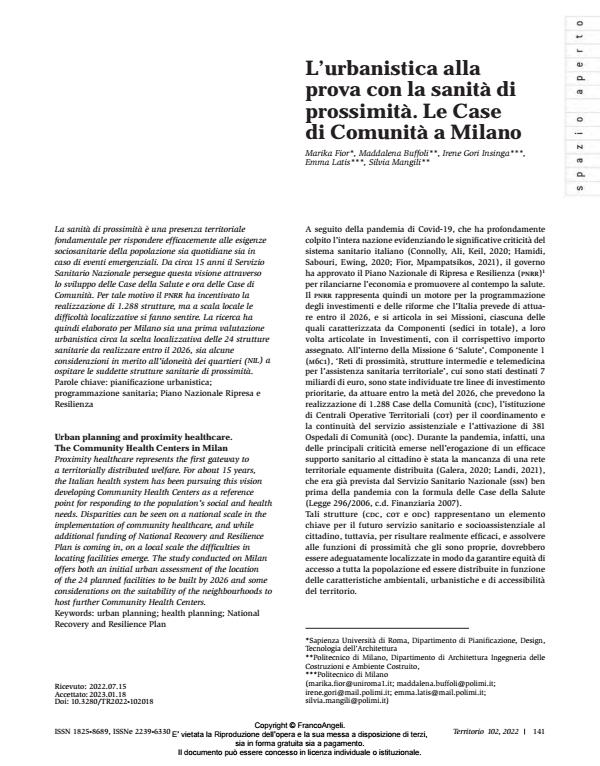Urban planning and proximity healthcare. The Community Health Centers in Milan
Journal title TERRITORIO
Author/s Marika Fior, Maddalena Buffoli, Irene Gori Insinga, Emma Latis, Silvia Mangili
Publishing Year 2023 Issue 2022/102
Language Italian Pages 11 P. 141-151 File size 345 KB
DOI 10.3280/TR2022-102018
DOI is like a bar code for intellectual property: to have more infomation
click here
Below, you can see the article first page
If you want to buy this article in PDF format, you can do it, following the instructions to buy download credits

FrancoAngeli is member of Publishers International Linking Association, Inc (PILA), a not-for-profit association which run the CrossRef service enabling links to and from online scholarly content.
Proximity healthcare represents the first gateway to a territorially distributed welfare. For about 15 years, the Italian health system has been pursuing this vision developing Community Health Centers as a reference point for responding to the population’s social and health needs. Disparities can be seen on a national scale in the implementation of community healthcare, and while additional funding of National Recovery and Resilience Plan is coming in, on a local scale the difficulties in locating facilities emerge. The study conducted on Milan offers both an initial urban assessment of the location of the 24 planned facilities to be built by 2026 and some considerations on the suitability of the neighbourhoods to host further Community Health Centers.
Keywords: urban planning; health planning; National Recovery and Resilience Plan
Marika Fior, Maddalena Buffoli, Irene Gori Insinga, Emma Latis, Silvia Mangili, L’urbanistica alla prova con la sanità di prossimità. Le Case di Comunità a Milano in "TERRITORIO" 102/2022, pp 141-151, DOI: 10.3280/TR2022-102018